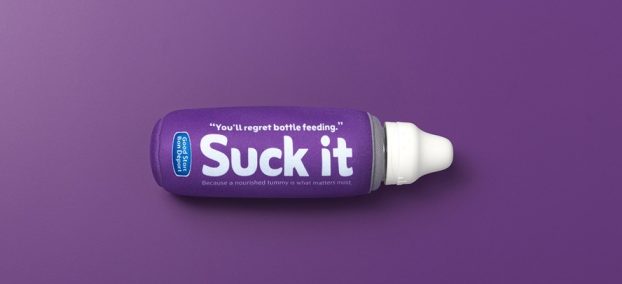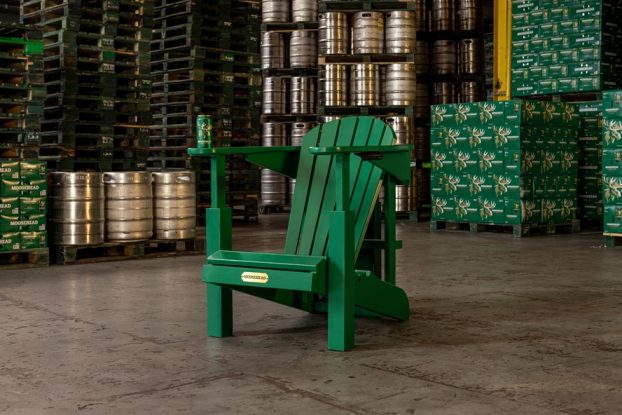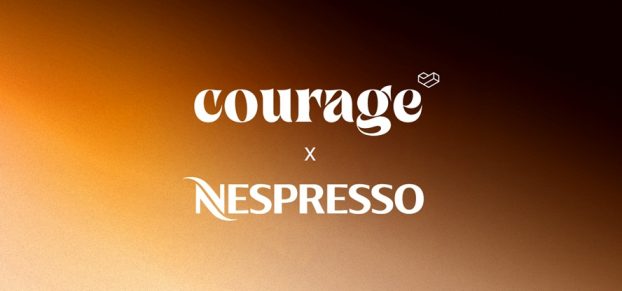Our Panel
Rick Shaver is VP client services at Toronto-based Encore Encore Strategic Marketing (rshaver@eesm.com)
Karyn Bigby is account executive at Mississauga, Ont.-based Orchard International (kbigby@orchardintl.com)
Trevor Metcalfe is EVP of Etobicoke, Ont.-based Marco Sales and Incentives (tmetcalfe@marcosales.com)
MCDONALD’S
Shaver:
It’s amazing how McDonald’s continues to raise the bar in terms of the ‘everyday value-added’ premiums for their kids’ meals. Not long ago, most premiums amounted to clumps of moulded plastic that kids worked hard to assemble, only to find that they did nothing special once completed.
The latest gizmos not only have self-propelling mechanisms for hours of fun, but they also light up and make noises. New reasons for my children to wail ‘let’s go to McDonald’s.’ My eight-year-old daughter, Bridget, continues to order Happy Meals, while her two older sisters wish secretly that they could too, wondering what new treasure lurks inside each bag. A proven winner continues to get better with Tiger Electronics’ Furby, Chibi Botto et al.
Bridget enjoyed the octopus-like Chibi Botto the most of all the premiums examined.
Bigby:
Some of the best collectible quick service restaurant (QSR) premiums have come from McDonald’s. They’ve done a great job of creating toys that work as stand-alones. However, they also encourage kids to collect them all to create a larger toy. For example, the tie-in to the Inspector Gadget movie offered multi-function body parts that snapped together to create a larger Gadget, and the tie-in to Buzz Light Year of Star Command served up rocket pieces that snapped together to create a monster ship.
Premiums are an important marketing tool for QSRs. The larger chains, like McDonald’s, can afford to buy the premiums with bells and whistles as they purchase in very high volumes. They can well afford the hottest properties, too.
Metcalfe:
When it comes to play value and visual appeal, both the Furby and Chibi Botto items have good repeatable action and/or noise (which are favourites of kids) – at a low volume level (a favourite of moms) .
As for collectibility: The colour and quality seems good on both and the noises and actions differ from item to item, so they will be suitable collectibles.
Of the bunch, I felt that the McDonald’s Musical Furby had the best overall combination of eye appeal and continual play appeal. It is also a good carry-along for car seat personal entertainment.
(Metcalfe was unable to provide premium ratings.)
Ratings (Shaver):
Musical Furby
collectibility: 3 out of 5
property tie-in: 2
intrinsic play value: 5
cost-effectiveness: 4 (due to high volume)
Wind-up Chibi Botto
collectibility: 3 out of 5
property tie-in: 2
intrinsic play value: 5
cost-effectiveness: 4 (due to high volume)
Ratings (Bigby):
Musical Furby
collectibility: 4 out of 5
property tie-in: 4
intrinsic play value: 4
cost-effectiveness: 5
Wind-up Chibi Botto
collectibility: 5 out of 5
property tie-in: 4
intrinsic play value: 5
cost-effectiveness: 5
BURGER KING
Shaver:
Burger King first kicked off its Backstreet Boys CD offer in the U.S. and Canada last August, but the CDs are still available at some restaurants if you ask for them. They were originally available for $2.99 with the purchase of any Value Meal.
Such self-liquidating offers (SLOs) can be very effective if the perceived value to the consumer is high. This is usually the net effect of the power of the borrowed interest property. Perceived value is high when the target knows that licensed merchandise like this would cost much more if it were purchased at a concert. Such well orchestrated SLOs can drive traffic and pay for themselves at the same time.
Any offer tied to the Backstreet Boys aimed at the teen and tween crowd continues to be relevant and compelling to this target and will help to move QSR incremental volume.
The CatDog premium is a nice complimentary offer to cover off the needs of the younger demo, but Pokémon seems soooo yesterday in a premium world where properties often last only a nano-second (remember Pogs?). Marketers who miss the wave of fleeting property fame can miss out on ROI if the borrowed interest property is yesterday’s news (and they’ll have mountains of premiums to write off too).
Bigby:
The tie-in to the right kid property is very important, whether it is to a movie, TV show or branded toy. This affects the collectibility of the item and hence the traffic in the restaurant. Of the sampling under review, I found the Pokémon 2000 premiums to be the best tie-in. The added bonus is that Pokémon is already perceived as a collectable (Gotta catch ’em all!).
The Backstreet Boys CD has great appeal to the tween market and a high perceived value. In addition, this CD contains a ‘world premiere release.’
Of all the premiums reviewed from the three QSRs, I found the most effective to be the Pokémon premium. It has it’s own intrinsic collectibility, and not all premiums have this. Another example of such a premium is the McDonald’s Teenie Beanie Babies line, which captured the whole Beanie Babies craze.
Metcalfe:
The CatDog toy has nice visual appeal – it looks good, and it’s colourful – but it has limited play action. I found it to be the least effective overall. The Pokémon plaque-on-a-stand is basically a one-trick pony with the wings being able to ‘flap’ just marginally. Without the Pokémon name, it would just be two pieces of plastic to clutter up a kid’s dresser.
That being said, these items are Pokémon characters, so they should have collectibility appeal. The colourful brochure packaged with the item nicely illustrates other available versions of these plaques, which should encourage repeat trips to the restaurant.
The Backstreet Boys CD, which was used as a blow-out item with meal purchase, will appeal to a wider range of age groups. As the BSBs are well-known artists and the CD is so inexpensive, this item has good ‘how can I lose?’ value.
Ratings (Shaver):
CatDog push toy
collectibility: 3 out of 5
property tie-in: 3
intrinsic play value: 1
cost-effectiveness: 2
Pokémon action card
collectibility: 4 out of 5
property tie-in: 1
intrinsic play value: 3
cost-effectiveness: 2
Backstreet Boys CD
collectibility: 4 out of 5
property tie-in: 5
intrinsic play value: 5
cost-effectiveness: 2
Ratings (Bigby):
CatDog push toy
collectibility: 4 out of 5
property tie-in: 3
intrinsic play value: 4
cost-effectiveness: 5
Pokémon action card
collectibility: 5 out of 5
property tie-in: 5
intrinsic play value: 5
cost-effectiveness: 5
Backstreet Boys CD
collectibility: 5 out of 5
property tie-in: 4
intrinsic play value: 5
cost-effectiveness: 5
SAFETY FIRST
As many QSR chains have learned, one of the first considerations for any premium must be safety. Karyn Bigby turned to Orchard International’s in-house expert, quality assurance manager Eva Muniak, to evaluate how well these premiums meet Canada’s standards.
The McDonald’s premiums under review passed inspection with flying colours. However, the same cannot be said for the Burger King premiums.
In Canada, the Canadian Hazardous Products Act Toys Regulations Schedule I – Part I & II sets the safety standards. Toys are classified by age: Over three or under three. Right away, any toys containing small parts are not suitable for children under three years of age.
Heat-sealed bags are a requirement, as they prevent young children from opening them and gaining access to the contents. Toys are also dropped from specified heights in safety testing to avoid potential choking hazards from small parts that could break off.
Of note, there are differences between the Canadian and U.S. regulations. For example, in the area of plush toys, the Canadian regulations for the ‘eye-pull’ test are more stringent. To that end, McDonald’s Canada is known to test its toys in Canada, even if the premium has already passed in the U.S.
Burger King’s CatDog push toy isn’t up to snuff because it has no labeling on its polybag and no indication of an age restriction. One hopes this premium passed the safety tests, but there are no assurances that it has.
Turning to Burger King’s Pokémon action card toy, although a label does indicate that it is not for children under three, the symbol used does not conform to Canadian regulations (a European symbol has been used). Other issues include ‘Made in China’ and other printing debossed on the product in English only (the French copy is on a card insert). Finally, this premium is double-bagged and there is no warning on the second bag about the age restriction. KB






















